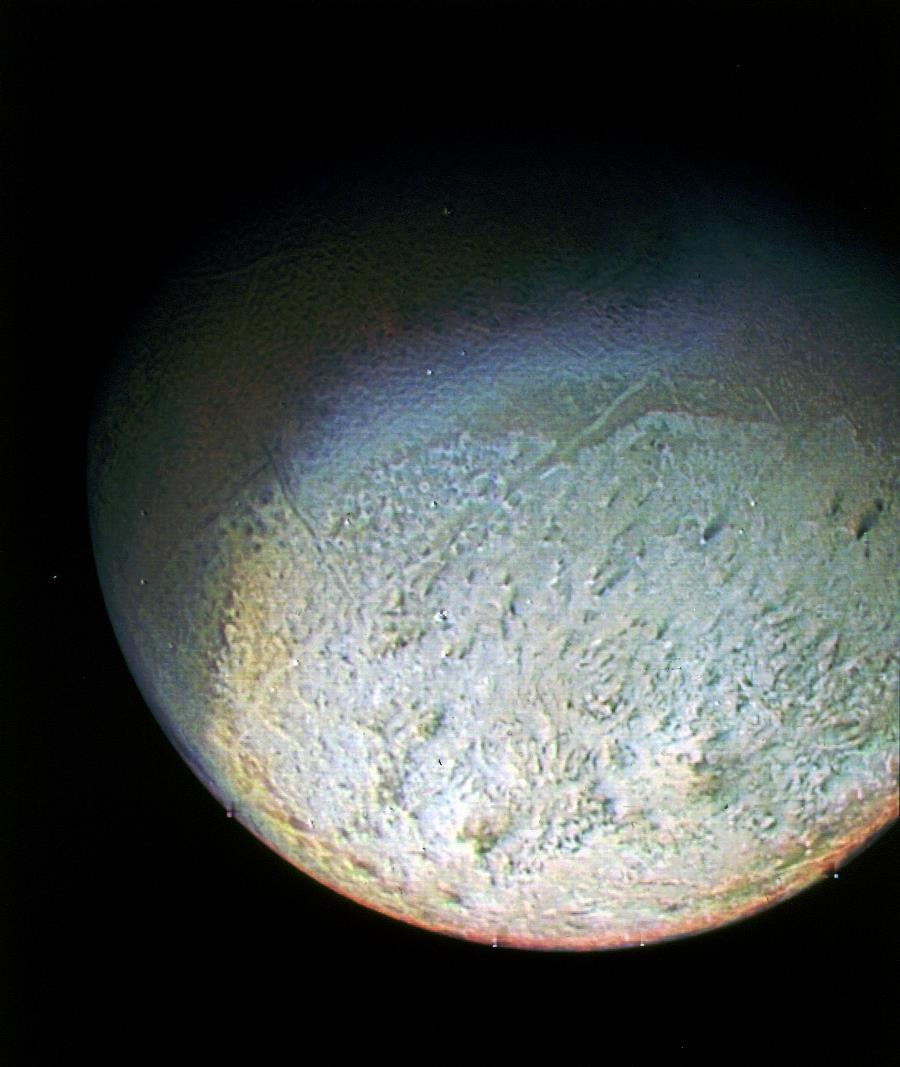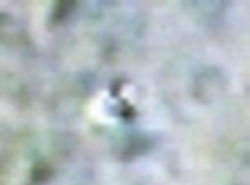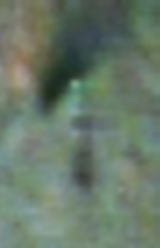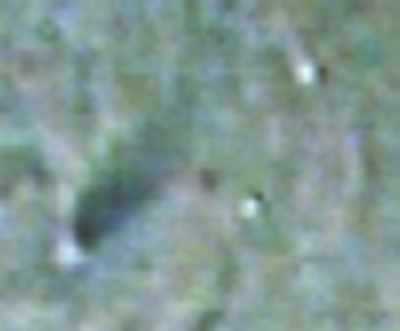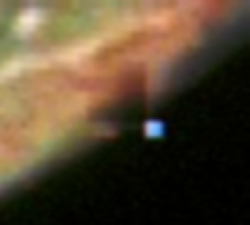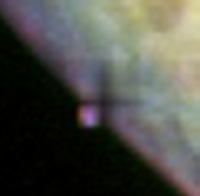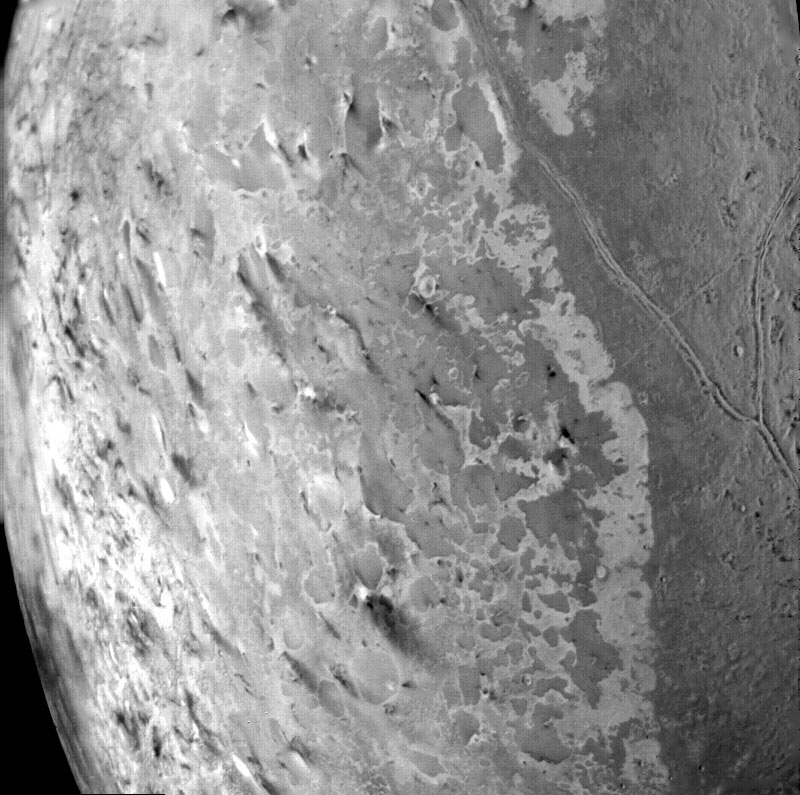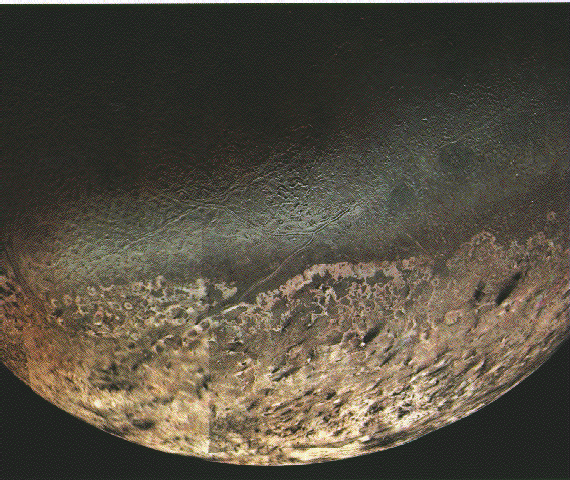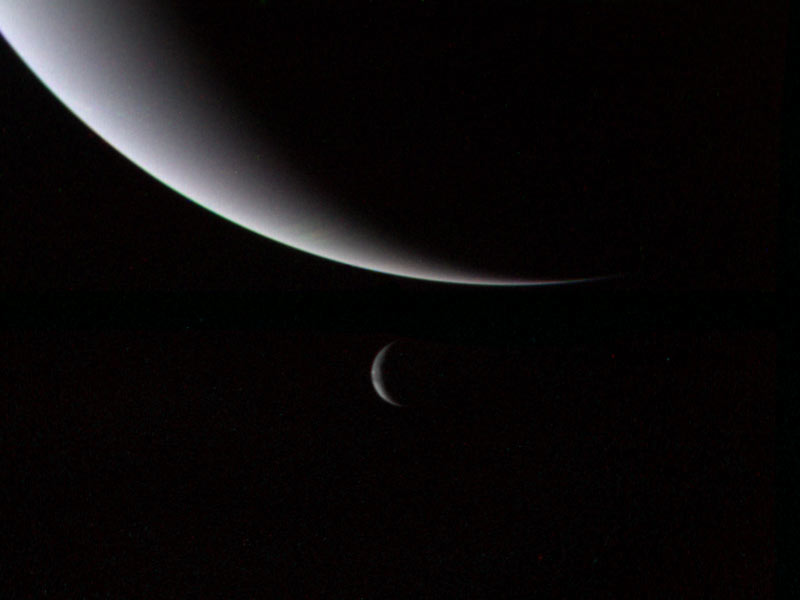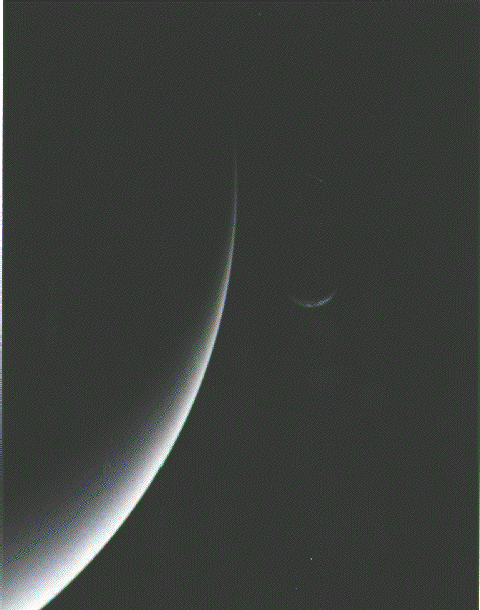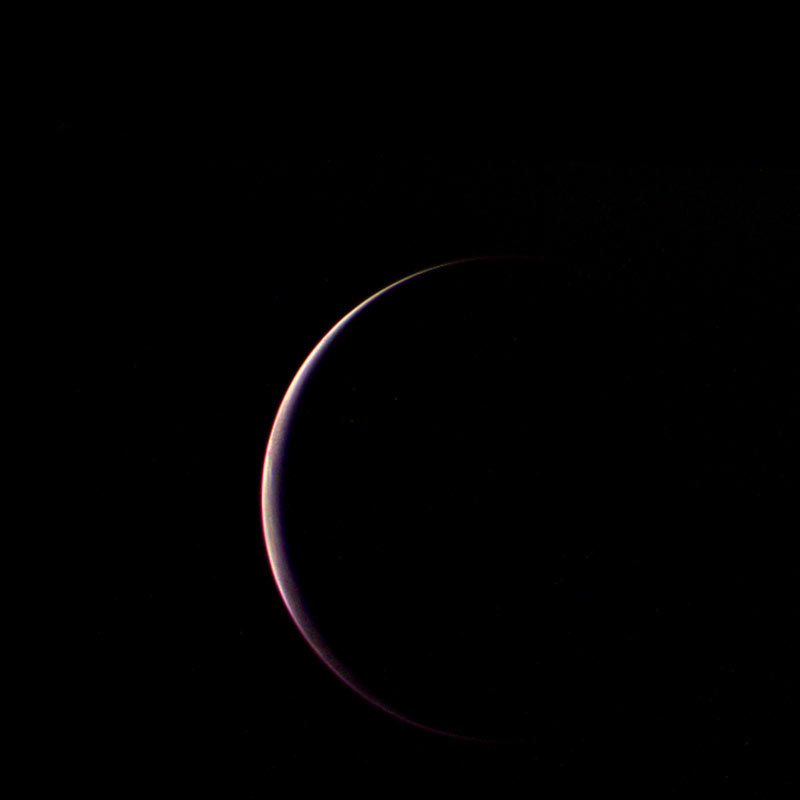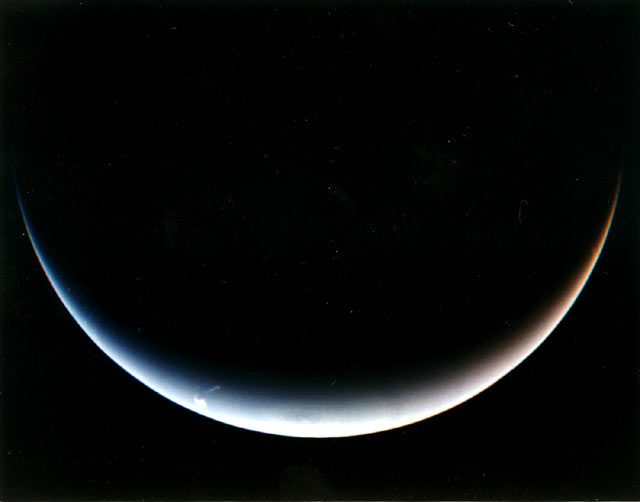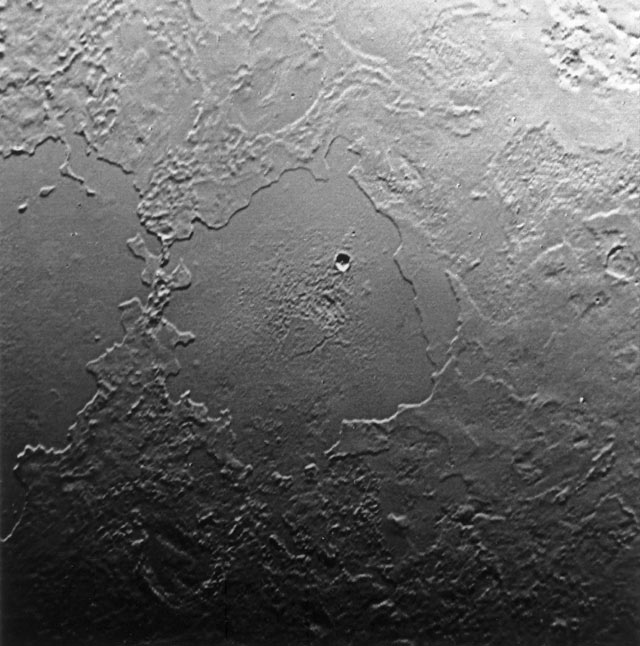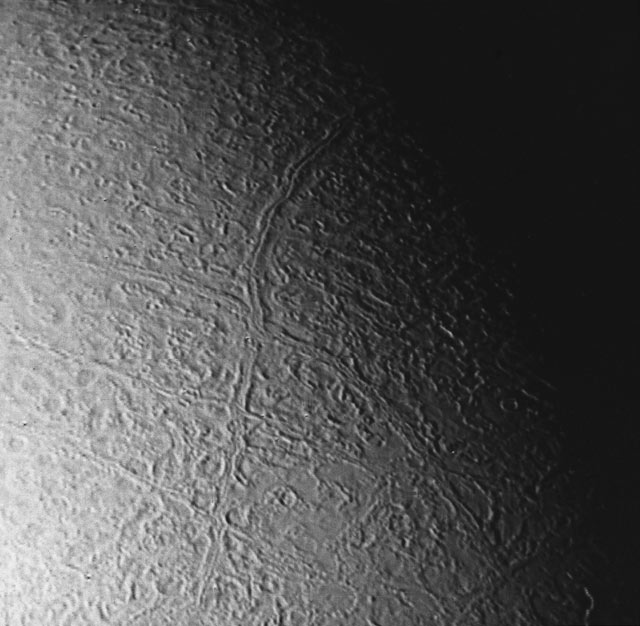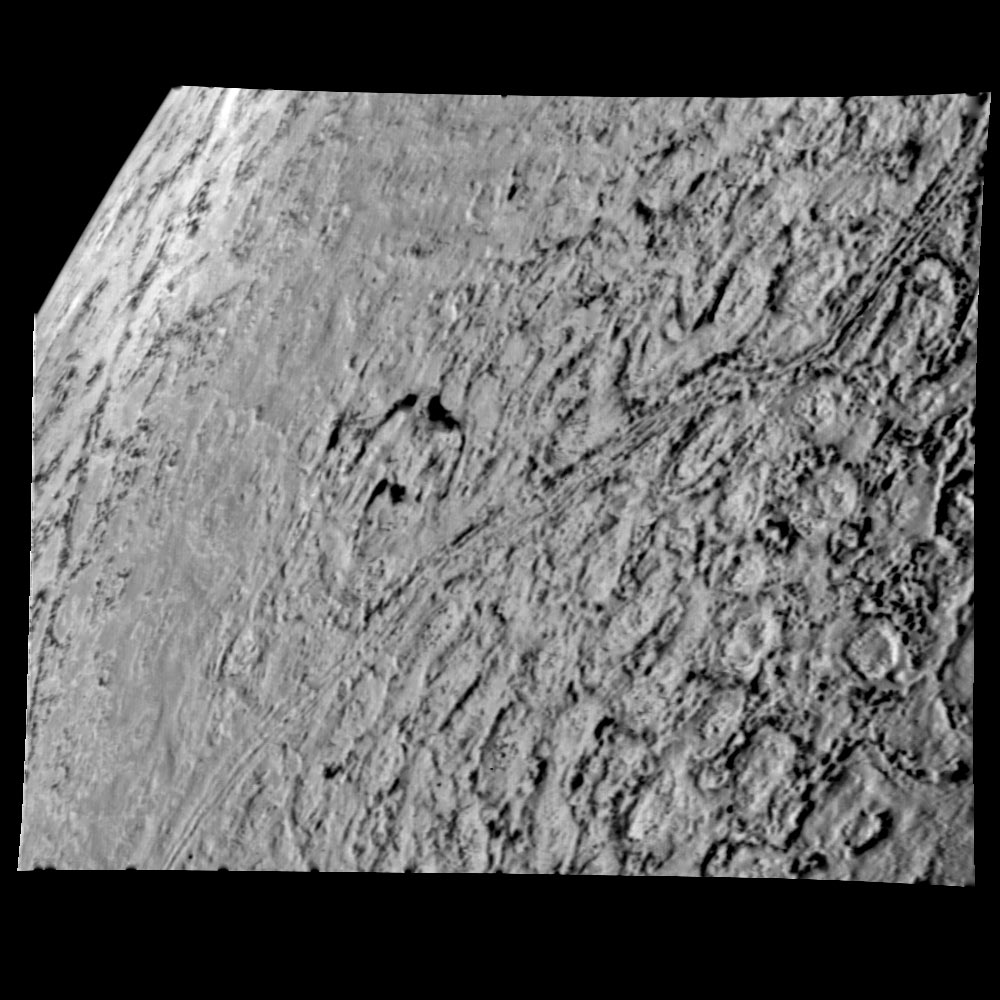|
The Enigmas on Triton |
|||||
|
Moon of Neptune ..
PIA01536: Detail of Triton's Surface Original Caption Released with Image: This color photo of Neptune's large satellite Triton was obtained on Aug. 24 1989 at a range of 530,000 kilometers(330,000 miles). The resolution is about 10 kilometers (6.2 miles), sufficient to begin to show topographic detail. The image was made from pictures taken through the green, violet and ultraviolet filters. In this technique, regions that are highly reflective in the ultraviolet appear blue in color. In reality, there is no part of Triton that would appear blue to the eye. The bright southern hemisphere of Triton, which fills most of this frame, is generally pink in tone as is the even brighter equatorial band. The darker regions north of the equator also tend to be pink or reddish in color. JPL manages the Voyager project for NASA's Office of Space Science. Image Credit:
Image Addition
Date:
Image Source: NASA Photo Journal |
|||||
Related Links:
|
|||||
|
..
|
|||||
|
The largest of Neptune's eight known satellites, Triton is different from all other icy satellites Voyager has studied. About three-quarters the size of Earth's Moon, Triton circles Neptune in a tilted, circular, retrograde orbit (opposite to the direction of the planet's rotation), completing an orbit in 5.875 days at an average distance of 330,000 kilometers (205,000 miles) above Neptune's cloud tops. Triton shows evidence of a remarkable geologic history, and Voyager 2 images show active geyser-like eruptions spewing invisible nitrogen gas and dark dust particles several kilometers into space. (See image below) Triton has a diameter of about 2,705 kilometers (1,680 miles) and a mean density of about 2.066 grams per cubic centimeter (the density of water is 1.0 gram per cubic centimeter). This means Triton contains more rock in its interior than the icy satellites of Saturn and Uranus do. The relatively high density and the retrograde orbit offer strong evidence that Triton did not originate near Neptune, but is a captured object. If that is the case, tidal heating could have melted Triton in its originally eccentric orbit, and the satellite might even have been liquid for as long as one billion years after its capture by Neptune. While scientists are unsure of the details of Triton's history, icy volcanism is undoubtedly an important ingredient. To understand what is happening on Triton, one must ask, "How cold is cold? How soft is soft? How young is young?" Water ice, whose melting point is 0 degrees Celsius (32 degrees Fahrenheit), deforms more easily and rapidly on Earth than rock does, but becomes almost as rigid as rock at the extremely low temperatures found on Triton, more than 4.5 billion kilometers from the Sun. Most of the geologic structures on Triton's surface are likely formed of water ice, because nitrogen and methane ice are too soft to support much of their own weight. On the other hand, nitrogen and methane, which form a thin veneer on Triton, turn from ice to gas at less than 100 degrees above absolute zero. Most of the geologically recent eruptions at those low cryogenic temperatures are due to the nitrogen and methane on Triton. Evidence that such eruptions occur was found in Voyager images of several geyser-like volcanic vents that were apparently spewing nitrogen gas laced with extremely fine, dark particles. The particles are carried to altitudes of 2 to 8 kilometers (1 to 5 miles) and then blown downwind before being deposited on Triton's surface. An extremely thin atmosphere extends as much as 800 kilometers (500 miles) above Triton's surface. Tiny nitrogen ice particles may form thin clouds a few kilometers above the surface. Triton is very bright, reflecting 60 to 95 percent of the sunlight that strikes it (by comparison, Earth's Moon reflects 11 percent). The atmospheric pressure at Triton's surface is about 14 microbars, a mere 1/70,000th the surface pressure on Earth. Temperature at the surface is about 38 kelvins (-391 degrees F), the coldest surface of any body yet visited in the solar system. At 800 kilometers (500 miles) above the surface, the temperature is 95 kelvins (-290 degrees F). Despite remarkable differences between Triton and the other icy satellites in the solar system, photographs reveal terrain that is reminiscent of Ariel (a satellite of Uranus), Enceladus (a satellite of Saturn), and Europa, Ganymede and Io (satellites of Jupiter). Even a few reminders of Mars, such as polar caps and wind streaks, can be seen on Triton's surface. Triton appears to have the same general size, density, temperature and chemical composition as Pluto (the only outer planet not yet visited by any spacecraft), and will probably be our best model of Pluto for a long time to come. SOURCE: NASA/JPL/ Voyager II |
|||||
|
..
IMAGE SOURCE: NASA/JPL/Voyager II |
|||||
...
..
..
..
IMAGE SOURCE: NASA/JPL/Voyager II |
|||||
..
..
IMAGE SOURCE: NASA/JPL/Voyager II |
|||||
| FAIR USE NOTICE: This page contains copyrighted material the use of which has not been specifically authorized by the copyright owner. Pegasus Research Consortium distributes this material without profit to those who have expressed a prior interest in receiving the included information for research and educational purposes. We believe this constitutes a fair use of any such copyrighted material as provided for in 17 U.S.C § 107. If you wish to use copyrighted material from this site for purposes of your own that go beyond fair use, you must obtain permission from the copyright owner. | |||||
|
|
